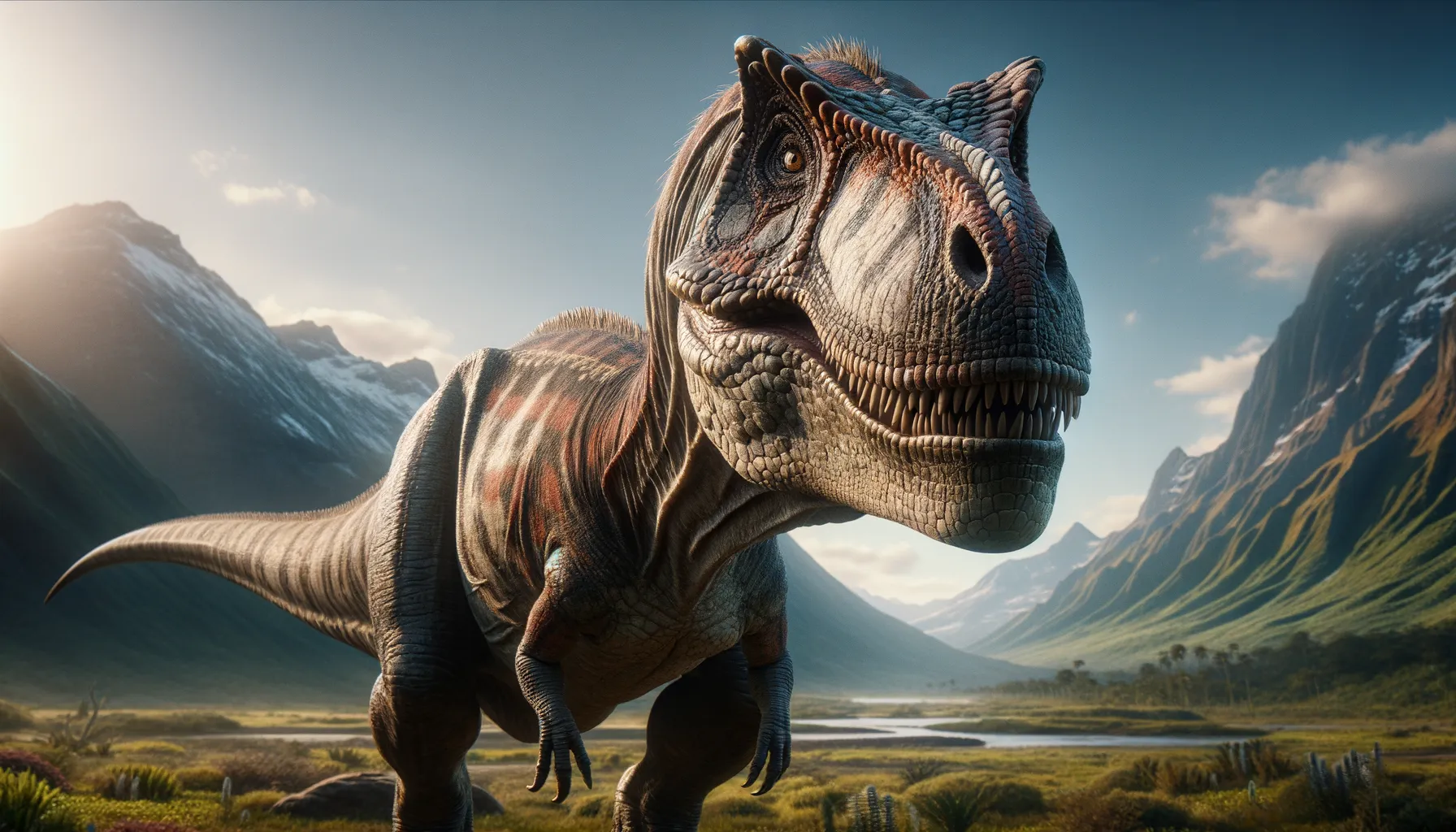
Taurovenator
The apex predator of Cretaceous Patagonia.
Period
Cretaceous
Length
Measured about 30 feet in length.
Height
Stood around 10 feet tall.
Weight
Weighed over a ton.
Taurovenator was a carnivorous dinosaur that roamed South America during the late Cretaceous period. Known for its robust body and formidable jaw structure, it was a top predator in its ecosystem. This theropod dinosaur is notable for its distinctive anatomy, which suggests a powerful and efficient hunting strategy. Its fossils help paleontologists understand more about the diversity and evolution of meat-eating dinosaurs of that era.
Diet
Taurovenator primarily fed on large herbivorous dinosaurs. Its diet also included smaller creatures that were abundant during the Cretaceous period.
Hunting
As a top predator, it likely used its speed and power to ambush prey. It is believed to have hunted in a solitary manner, relying on stealth and surprise.
Environmental challenges
The Taurovenator lived in a changing environment with varying climates. It faced competition from other predators and needed to adapt to fluctuations in prey availability. Survival required keen hunting skills and the ability to cope with occasional resource scarcity.
Speed
Relatively agile for its size.
Lifespan
Estimated to be several decades.
First discovery
Discovered during the early 21st century in Patagonia, Argentina.
Fun Facts
- Taurovenator was a meat-eating dinosaur that lived during the Late Cretaceous period.
- The name Taurovenator means 'bull hunter', highlighting its predatory nature.
- Fossils of Taurovenator were discovered in Argentina, which is rich in dinosaur history.
- It is believed to have been a part of the theropod group, sharing traits with famous dinosaurs like Tyrannosaurus rex.
- Taurovenator had strong jaws and sharp teeth, making it a formidable hunter.
- This dinosaur was relatively small compared to other theropods, with estimates suggesting it was around 6 meters long.
- The discovery of Taurovenator adds valuable information about the diversity of predatory dinosaurs in South America.
Growth and Development
Taurovenator likely grew rapidly during its juvenile years. Scientists believe it experienced significant growth spurts, culminating in a large adult size. It developed powerful limbs and jaws, essential for its predatory lifestyle.
Habitat
It inhabited the lush floodplain forests and river valleys of prehistoric Patagonia. The region provided a rich and diverse ecosystem that supported a variety of prey species. Seasonal changes may have influenced its migratory patterns and hunting strategies.
Interaction with other species
While Taurovenator primarily hunted alone, it may have occasionally encountered other predators. It had to assert dominance to maintain its position at the top of the food chain. Encounters with other species led to dynamic and sometimes competitive interactions.
Natural lifespan
Taurovenator likely lived up to 30 years in the wild.
Reproduction
Reproduced through laying eggs, likely in nests built by females. The young were probably cared for by the parents until they could fend for themselves. This nurturing helped ensure the survival of the species in a competitive environment.
Social behaviour
Primarily solitary, it may have established territories to ensure access to resources. While not inherently social, encounters with other Taurovenators were possible during breeding seasons.
Fossil locations
Its fossils have been predominantly found in Patagonia, Argentina, a region rich in dinosaur remains. The well-preserved fossils contribute valuable information about its anatomy and lifestyle.
